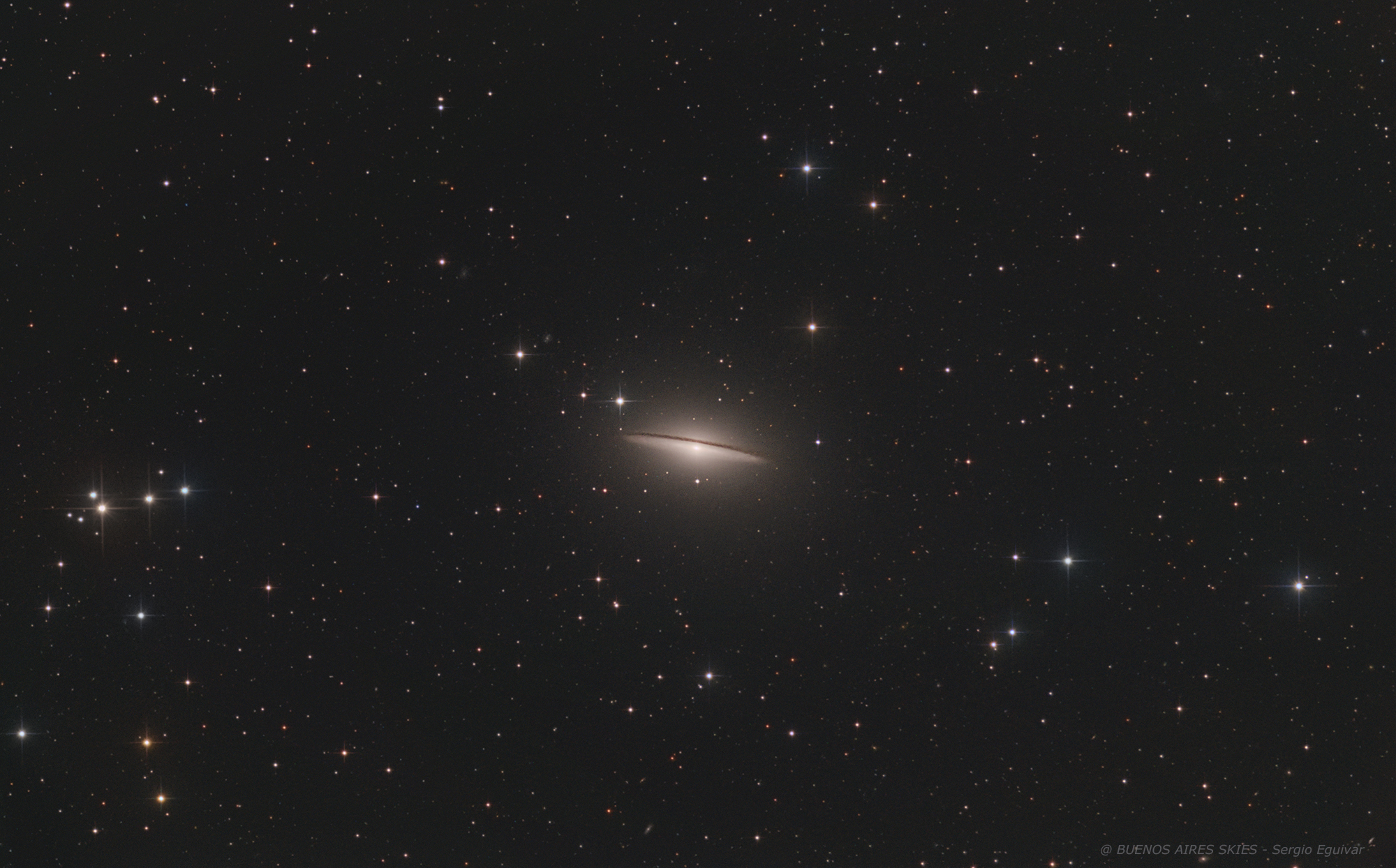
0222222222222222222222222222222222222222222222222222222.
| HOME |
MESSIER 104 (AKA THE SOMBRERO GALAXY)
SPIRAL GALAXY IN VIRGO
(Image centered at: ra 12 h: 40 m / dec -11º 37')

May 2025, Home Backyard in Martinez, Buenos Aires, Argentina
DATA
TYPE: Spiral Galaxy
APPARENT DIAMETER: 9x4 arc minutes
APPARENT MAGNITUDE (V): 8
DISTANCE: approximately 28 milion light years
IMAGE INFORMATION
INSTRUMENT: 6" ORION OPTICS UK (Ultra Grade Optics) w/Sky Watcher Coma Corrector (0.9x) working at at f4.5
CAMERA: QHY 183 MONO
MOUNT: VIXEN GDPX, OAG with Starlight Xpress Lodestar
FILTERS: OPTOLONG LRGB Set
SKY CONDITIONS: urban skies - Bortle 8
EXPOSURES: LRGB (120,120,120,120)
OBJECT DESCRIPTION AND IMAGE SESSION
Messier 104 is one of the brightest galaxies in the sky. With a visual brightness of 8, I decided to have a try from my light polluted backyard. It is a classic well known object for visual observers aka The Sombrero Galaxy. From the southern hemisphere this Sombrero shape is viewed upside down, so I am presenting the image in that way which in fact is not very usual. Some faint galaxies in the background were captured. Seems like the 8 hours of integration time paid off despite the bright sky of my home location.
Messier 104 was not included in Messier's originally published catalog. However, Charles Messier added it by hand to his personal copy on May 11, 1781, and described it as a "very faint nebula." William Herschel found this object independently on May 9, 1784.
From Earth perspective Messier 104 can be seen as a edge-on profile featuring a broad ring of obscuring dust lanes. The Sombrero galaxy can be seen across the spectrum, and is host to a central super massive black hole. It spans for about 50,000 light-years across, and 28 million light-years away. M104 is one of the largest galaxies at the southern edge of the Virgo Galaxy Cluster.